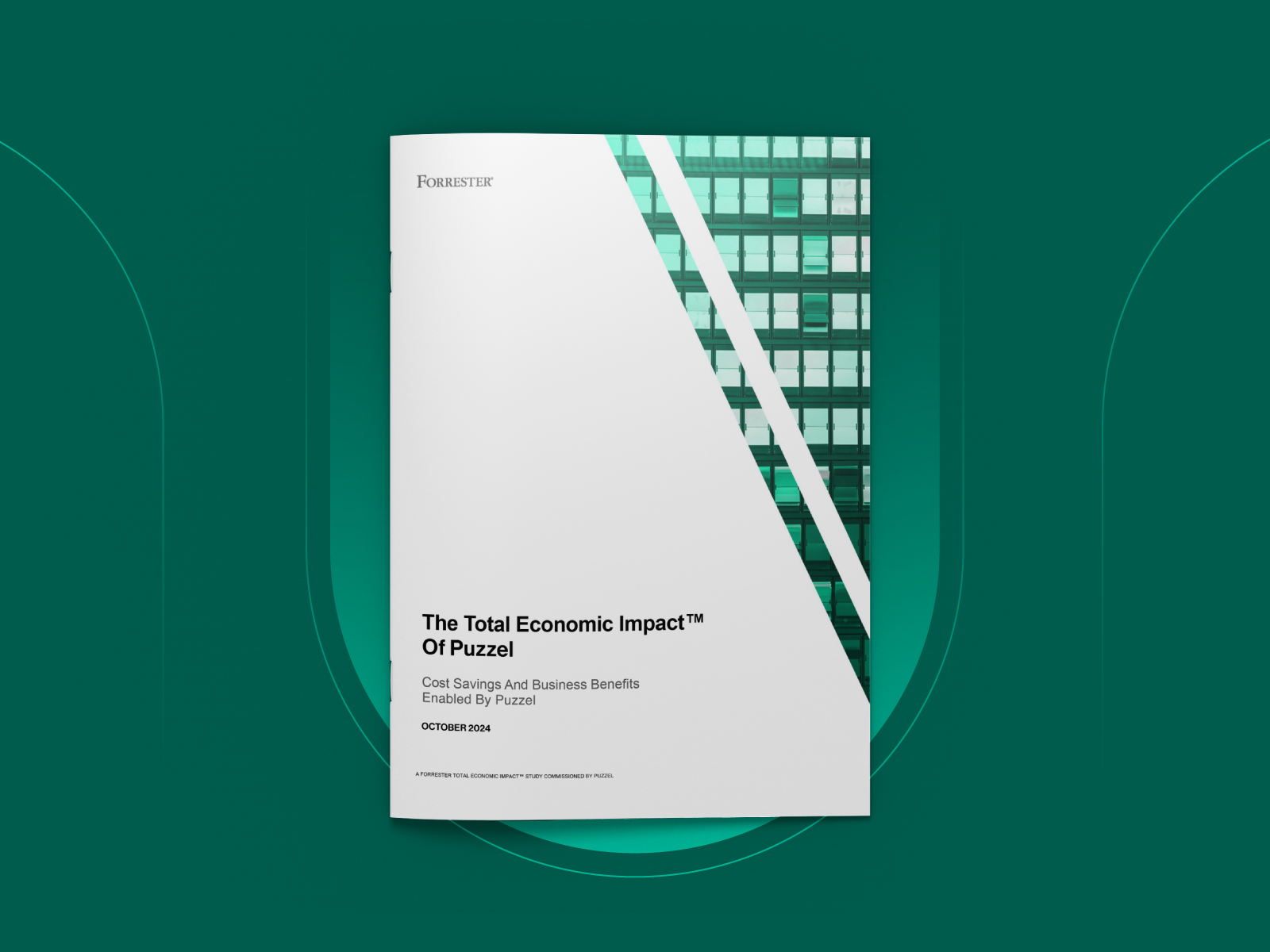Last updated: December 2024
Learn about Customer Experience (CX) and why it's important for building successful relationships with your customers.
A recent study by Hubspot reveals that 90% of CX leaders agree customer expectations are at an all-time high. As customer expectations evolve, delivering exceptional customer experiences (CX) has become a top priority for businesses striving to gain a competitive edge and foster long-term relationships with their customers.
Organisations that prioritise CX reap numerous benefits, including customer loyalty, increased revenue, and positive brand perception. In fact, a study by Salesforce found that 88% of customers report that the experience a company offers is as important as its products or services. But what exactly is CX? And why is customer experience important?
Learn about customer experience and its benefits, how to measure CX and the role of cloud contact centers in enhancing customer experience.
What is Customer Experience (CX)?
Customer experience, also known as CX, encompasses every interaction a customer has with a brand throughout their entire customer journey. It’s not limited to a single touchpoint; rather, it’s the sum of all moments—whether online, offline, or across various channels—that shape a customer’s perception. It includes every interaction a customer has with a brand, from initial awareness and engagement to post-purchase support and loyalty.
Are customer service and customer experience the same?
Customer service and customer experience are closely related but not the same. Customer service is a subset of the broader concept of customer experience. Customer service is a crucial component of the overall customer experience, but CX extends beyond just service interactions to encompass the entirety of the customer's journey and interactions with the brand.
Let’s look at some definitions that are closely related to customer experience.
Customer service: Customer service relates to the assistance, support, and solutions to customers before, during, and after a purchase or interaction with a company's products or services. It involves addressing queries, resolving issues, and catering to customer needs and preferences through various communication channels such as phone, email, chat, social media, or in-person interactions. Effective customer service aims to enhance the customer experience, build trust, and foster long-term relationships.
Customer journey: A customer journey refers to the sum of all interactions and touchpoints that a customer experiences with a brand or business across different stages of their relationship lifecycle, from initial awareness to post-purchase engagement. It represents the path that a customer takes while interacting with a company, including researching products/services, making purchases, seeking support, and providing feedback.
Customer care: The holistic approach of nurturing and maintaining relationships with customers by providing attentive support, personalised assistance, and proactive engagement. Customer care involves listening to customer feedback, anticipating their needs, and taking actions to exceed expectations, ultimately fostering long-term loyalty and advocacy.
Understanding the importance of customer experience
So, why is CX important? A positive customer experience is crucial for building trust, fostering loyalty, and driving advocacy, as satisfied customers are more likely to return for future purchases and recommend the brand to others. At the same time, good customer experience results in 3x returns to shareholders, according to McKinsey.
In contrast, poor customer experiences can lead to customer churn, negative word-of-mouth, and damage to a brand's reputation. In fact, a study by PWC found that one in three customers would walk away from a brand they love after just one bad experience. Additionally, according to Forbes, organisations lose $75 billion a year due to poor customer service (which is an important aspect of customer experience).
Now, let’s look at the main benefits of prioritising customer experience.
"Customer spending increases up to 140% following a positive experience, according to Deloitte."
The benefits of prioritising CX
Prioritising customer experience (CX) is not just beneficial; it’s essential for any business that wants to thrive in the modern landscape. Here are some key benefits of placing CX at the forefront of your business strategy:

Enhanced customer satisfaction: When you prioritise CX, you directly contribute to higher customer satisfaction. By understanding and meeting your customers’ needs and expectations, you create positive experiences that leave lasting impressions.
Increased customer loyalty: Customers who have consistently great experiences with a brand are more likely to remain loyal. This loyalty translates into repeat business and a higher lifetime value per customer. In fact, a study by Dimension Data found that organisations that prioritise offering great CX reported a 92% increase in loyal customers.
Positive word-of-mouth: Happy customers are your best advocates. They are more likely to recommend your brand to friends and family, which can be a powerful form of organic marketing. In fact, of consumers who experience a positive CX, 77% will recommend the brand to a friend.
Competitive advantage: In industries where products and prices are similar, CX can be a key differentiator. A superior customer experience can set you apart from competitors and attract more customers. And, with 54% of U.S. consumers saying that most companies need to improve their customer experience, it can create a huge competitive advantage to put CX in focus.
Higher revenues: There is a strong correlation between CX and revenue growth. Customers are willing to pay more for better experiences, and businesses that deliver on CX can see increased sales and profitability. In fact, according to McKinsey, improving customer experience increases sales revenues by 2-7%.
Reduced customer churn: A focus on CX can help reduce the rate at which customers stop doing business with you. By addressing pain points and improving the overall experience, you can decrease customer churn.
Better customer insights: Prioritising CX often involves collecting and analysing customer feedback, which can provide valuable insights into product development, marketing strategies, and operational improvements.
Employee satisfaction: Employees tend to be happier and more engaged when they are part of a company that values CX. This can lead to better performance and lower turnover rates.
Brand strengthening: A commitment to CX helps build a strong, customer-centric brand identity. This can enhance your brand’s reputation and lead to long-term success.
Key elements of a good customer experience strategy
We’ve looked at the many benefits of prioritising customer experience for organisations. Now, let’s explore how to make a great customer experience by looking at some core components of a good CX strategy (and how you can implement these to upgrade your CX).
5 ways to improve the CX

1. Build a customer-centric culture
A successful customer experience strategy begins with fostering a customer-centric culture. This involves ensuring that every member of your organisation, from top management to frontline employees, understands the importance of CX and is committed to delivering exceptional service. Remember, only one negative customer experience can highly affect your company – therefore, every employee should know the importance of putting the customer at the front. Some key elements of building a customer-centric culture include:
- Leadership commitment: Leaders must champion the importance of CX and model customer-centric behaviours.
- Employee training: Regular training programs to equip employees with the skills and knowledge to enhance customer interactions.
- Recognition and rewards: Incentivising employees who excel in delivering superior customer experiences.
2. Understand the customer journey
Understanding the customer journey is crucial for developing an effective CX strategy. Customer journey mapping involves visualising the entire customer experience from the initial point of contact to post-purchase interactions. This helps identify touchpoints where your customers interact with your brand and uncover areas for improvement.
- Identify touchpoints: Document all points of interaction, including online and offline channels.
- Analyse pain points: Identify stages where customers may face challenges or dissatisfaction.
- Optimise touchpoints: Implement changes to enhance the customer experience at critical stages.
3. Give personalised experiences
Personalisation is a key element of a customer experience strategy. In fact, according to Statista, 62% of consumers state that an organisation would lose their loyalty if it delivered a non-personalised experience. By tailoring interactions to meet your individual customer needs and preferences, your organisation can create more meaningful and memorable experiences.
Strategies for personalisation include:
- Data collection: Gather data on customer preferences, behaviours, and purchase history.
- Segmentation: Segment customers based on similar characteristics or behaviours.
- Tailored communications: Use personalised messages and offers to engage customers effectively.
4. Deliver omnichannel experiences
Customers don’t want to repeat themselves to different agents. Nor do they want to have disconnected experiences. In fact, a study by Salesforce found that 79% of consumers expect seamless interactions across different departments. Therefore, providing a seamless omnichannel experience is essential for a robust CX strategy. Your customers should be able to interact with your brand through their preferred channels, whether it's online, in-store, via mobile, or social media, without any disruption in service quality.
5. Empower your teams
Customer service agents are your best advocates. Empowering your employees and customer service agents to make decisions that benefit the customer can greatly enhance CX. Providing them with the necessary tools, training, information, and authority to resolve issues quickly and effectively is key.
Related resource: The Crucial Role of Training in Elevating Contact Centre Performance
How to measure customer experience
Now that we’ve covered some important elements of a good CX strategy, it’s time to look at how to measure it. This is crucial to understand how well you are meeting customer expectations and identify areas for improvement. Here are some examples for measuring customer experience:
- Surveys and feedback forms: Surveys are a great way to collect valuable customer feedback and get insights into your customers’ experiences with your organisation, products and services. Implementing surveys and feedback forms at key touchpoints in the customer journey allows your business to collect valuable insights directly from customers. Surveys can be distributed via email, website pop-ups, or mobile apps, with questions tailored to specific interactions or experiences.
- Net Promoter Score (NPS): NPS measures customer loyalty and satisfaction by asking customers a single question: "How likely are you to recommend our product/service to a friend or colleague?" Customers are then categorised as Promoters, Passives, or Detractors based on their responses, providing insights into overall satisfaction and likelihood of recommendation.
- Customer Satisfaction Score (CSAT): CSAT measures customers' satisfaction with a specific interaction or experience by asking them to rate their satisfaction on a scale (e.g., from 1 to 5 or from "very unsatisfied" to "very satisfied"). CSAT surveys are typically sent after a support interaction or purchase, helping businesses gauge satisfaction levels in real-time.
- Customer Effort Score (CES): CES measures the ease of the customer experience by asking customers how much effort they had to exert to achieve their goal (e.g., resolving an issue, or making a purchase). CES surveys help identify friction points in the customer journey and prioritise efforts to streamline processes and reduce customer effort.
- Track customer retention and churn rates: Sometimes customers leave, and sometimes it’s out of your hands. But learning what led to them leaving is crucial to prevent it from happening again. By monitoring customer retention rates (the percentage of customers who continue to use a product or service over time) and churn rates (the percentage of customers who stop using a product or service), you’ll get insights into overall customer satisfaction and loyalty. High retention rates indicate strong customer loyalty, while high churn rates may indicate dissatisfaction or issues with the customer experience.
The role of cloud contact centers in enhancing customer experience (CX)
Cloud contact centers play a pivotal role in shaping the customer experience by providing organisations with the tools and capabilities to deliver seamless, personalised, and efficient customer service across multiple channels. Unlike traditional on-premises solutions, cloud contact centers offer scalability, flexibility, and advanced features that enable organisations to meet the evolving needs and preferences of their customers in real-time.
By integrating cloud contact centers into your CX strategy, you can leverage technology to deliver these benefits. Cloud solutions offer the tools and flexibility needed to provide a seamless, responsive, and personalised customer experience, which is key to reaping the rewards of a CX-focused approach.
Frequently asked questions.
Net Promoter Score (NPS) is a key metric used to measure customer loyalty and satisfaction. It is calculated by asking customers a single question: "On a scale of 0 to 10, how likely are you to recommend our product/service to a friend or colleague?" Based on their responses, customers are classified into three categories:
- Promoters (scores 9-10): Loyal enthusiasts who will keep buying and refer others.
- Passives (scores 7-8): Satisfied but unenthusiastic customers who are vulnerable to competitive offerings.
- Detractors (scores 0-6): Unhappy customers who can damage your brand through negative word-of-mouth.
Customer Relationship Management (CRM) systems play a crucial role in enhancing customer experience by centralising customer data and streamlining interactions. CRM tools help businesses manage and analyse customer interactions and data throughout the customer lifecycle, improving customer relationships, and driving sales growth. Key benefits of CRM for CX include:
- Personalised Interactions: CRM systems store detailed customer information, enabling personalised communications and tailored marketing efforts.
- Efficient Service: By providing a 360-degree view of the customer, CRM systems ensure that customer service representatives have all necessary information at their fingertips, leading to faster and more efficient service.
- Customer Insights: CRM analytics offer insights into customer behaviours and preferences, helping businesses make data-driven decisions to enhance the overall customer experience.







